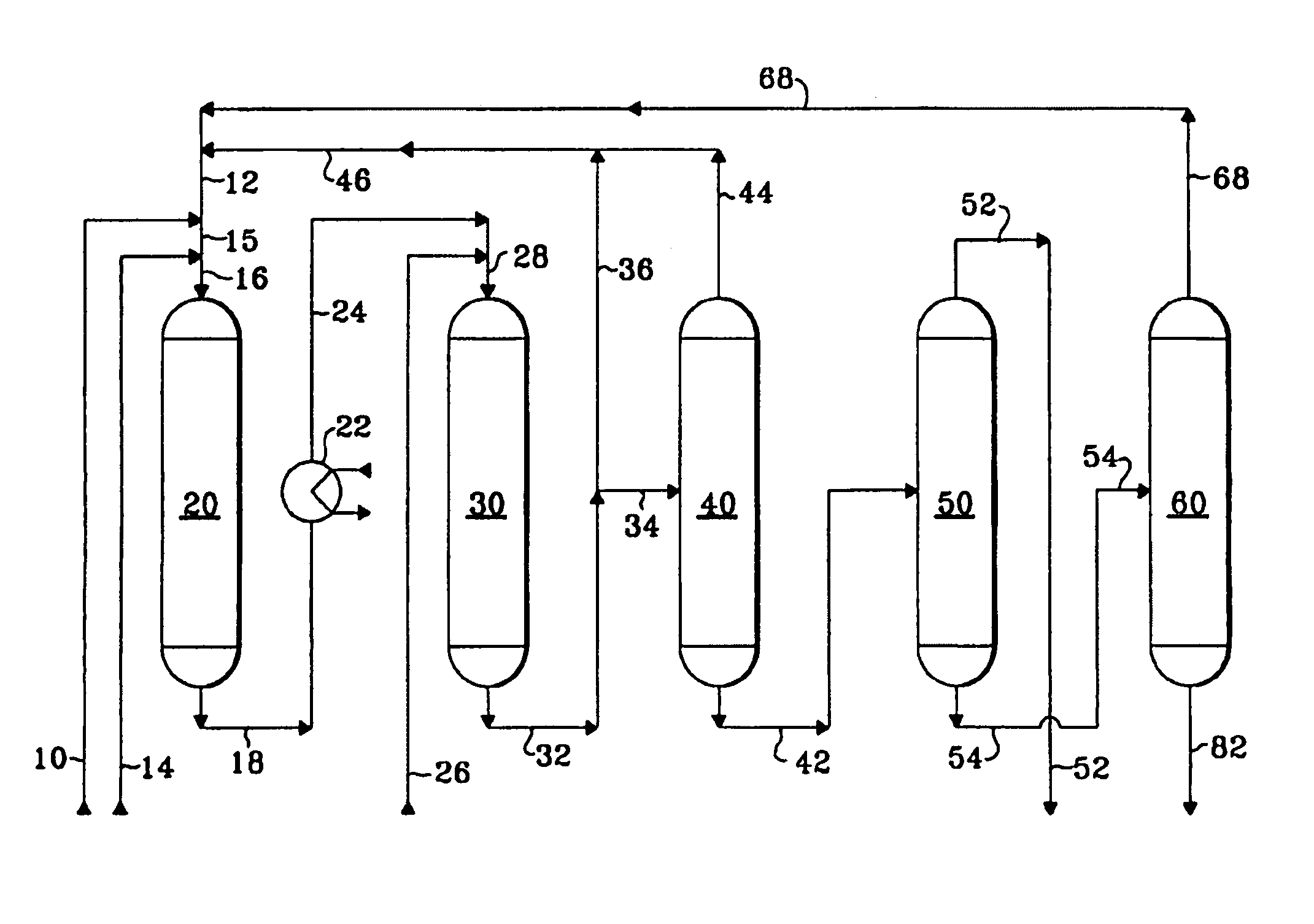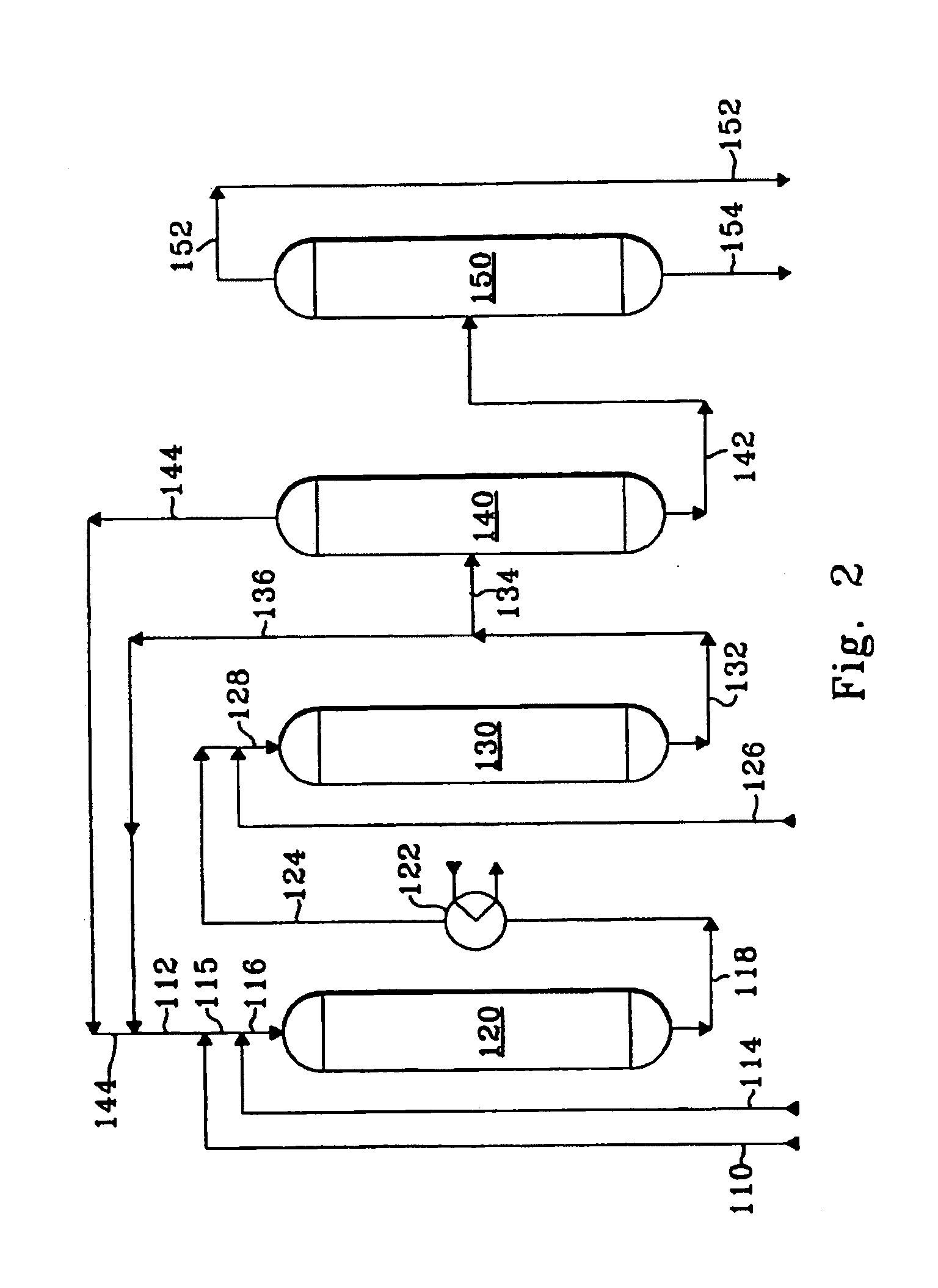Alkylation process using UZM-8 zeolite
a technology of uzm-8 zeolite and alkylation process, which is applied in the direction of hydrocarbon preparation catalysts, physical/chemical process catalysts, bulk chemical production, etc., can solve the problem that the byproduct 1,1-diphenylethane (1,1-dpe) cannot be readily converted to ethylbenzene by alkylation or transalkylation
- Summary
- Abstract
- Description
- Claims
- Application Information
AI Technical Summary
Benefits of technology
Problems solved by technology
Method used
Image
Examples
example 1
[0088]A fresh alkylation catalyst comprising 70 wt-% zeolite beta and 30 wt-% alumina binder was prepared and is designated as Catalyst A. The zeolite beta for Catalyst A was prepared in substantially the same manner as described in U.S. Pat. No. 5,522,984.
[0089]An aluminosilicate reaction mixture was prepared in the following manner. A 7329.73 g portion of DEDMAOH (20% aq) was added to a tank. A 804.38 g portion of Al (Osec-Bu)3 (95%+) was added to the tank, and the resulting solution was thoroughly mixed for 45 min. A 2000 g quantity of deionized water was then added to the solution, followed by the addition of a 2526.96 g portion of precipitated silica (Ultrasil™ VN SP3, 89% SiO2). Next, a solution of 126.69 g of NaOH dissolved in 212.25 g of deionized water was prepared and added to the reaction mixture and the reaction mixture was thoroughly mixed for 30 min. The reaction mixture was then transferred to a 19-L stirred reactor. The tank was rinsed with 1000 g of deionized water ...
example 2
[0095]The experimental procedure used in the tests for Example 1 was as follows. A volume of the catalyst to be tested was loaded into a cylindrical reactor. The reactor was equipped with a thermocouple in a thermowell located to measure temperatures at distances along the length of the fixed catalyst bed. Dry benzene was passed through the reactor at 260° C. (500° F.) and at a benzene LHSV of 6.7 hr−1 for 24 hours.
[0096]Subsequently, the flow of fresh benzene was adjusted and the reactor inlet temperature was lowered to a temperature about 50° C. (90° F.) below the desired distance average bed temperature (DABT) for the initial testing conditions. As used herein, DABT means the temperature calculated by plotting the catalyst bed temperature versus distance along the catalyst bed, computing the area under the curve from the inlet to the outlet of the catalyst bed, and dividing the area by the length of the catalyst bed. Fresh ethylene was introduced into the reactor. Then a portion ...
example 3
[0101]The experimental procedure used in the tests for Example 3 was the same as for Example 2, except that for the tests for Example 3 the catalyst was Catalyst D, the ethylene WHSV was about 0.89 hr−1, and the molar ratio of fresh benzene to fresh ethylene was about 1.8. In Example 3, the R / FF was about 4.3 during tests 1 and 2. Subsequently, the reactor effluent recycle was stopped during test 3. It is believed that minimal catalyst deactivation occurred over the duration that the tests were performed.
[0102]The results shown in Table 2 are averages from measurements and / or analyses at each test condition. Table 2 shows that at nearly the same ethylene conversion recycling reactor effluent increased the EB selectivity and the total selectivity to (EB+DEB+TEB+TeEB), and decreased the total selectivities to (C4-Bz+C4-EB+C4-DEB ) and (DPE+EDPE). In addition, recycling reactor effluent decreased by at least 66% the selectivities to non-aromatics and to compounds heavier than DPE and E...
PUM
| Property | Measurement | Unit |
|---|---|---|
| mole ratio | aaaaa | aaaaa |
| mole ratio | aaaaa | aaaaa |
| mole ratio | aaaaa | aaaaa |
Abstract
Description
Claims
Application Information
 Login to View More
Login to View More - R&D
- Intellectual Property
- Life Sciences
- Materials
- Tech Scout
- Unparalleled Data Quality
- Higher Quality Content
- 60% Fewer Hallucinations
Browse by: Latest US Patents, China's latest patents, Technical Efficacy Thesaurus, Application Domain, Technology Topic, Popular Technical Reports.
© 2025 PatSnap. All rights reserved.Legal|Privacy policy|Modern Slavery Act Transparency Statement|Sitemap|About US| Contact US: help@patsnap.com



